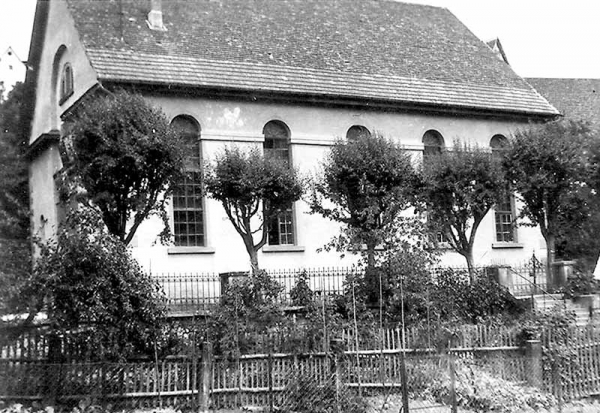The old synagogue
The Jewish community of Rexingen built its first synagogue in the first half of the 18th century. The exact date of building is not known. The synagogue was situated in the immediate vicinity of the buildings of the Knights of Saint John in which the first “protected Jews” lived.
A report dated October 4th, 1835, reads as follows: “The synagogue consists of two buildings, the synagogue itself which is a stone building, and a small wooden annex containing the women’s section. The synagogue is not very old but is very imperfectly built.”
The building, like many other synagogues of the rural Jews in the 18th century, was outwardly inconspicuous, hardly differing from the neighbouring houses.
It was preserved even after the building of the new synagogue and was used for various community functions. For example, it housed the Mikwe, where the ritual bath took place. In 1977, it was pulled down to make room for the widening of Freudenstädter Strasse.
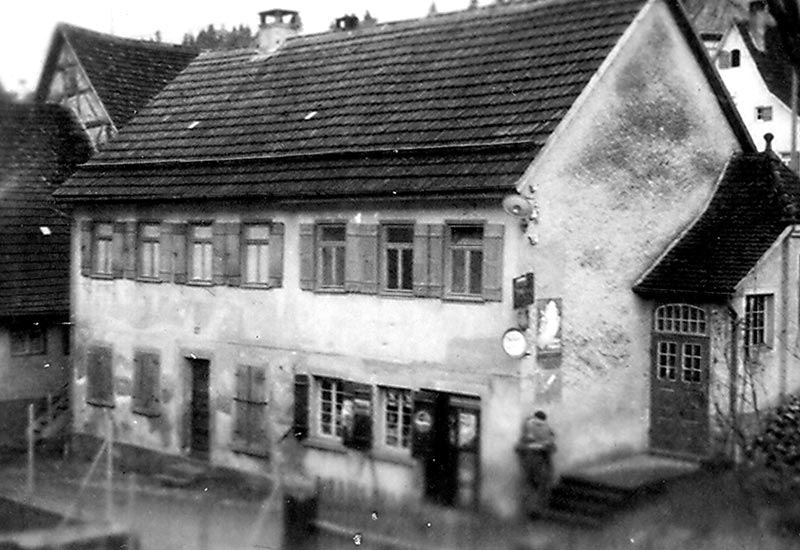
Planning and building the new synagogue
Soon the old synagogue was too small for the fast-growing Jewish community. The building of a new synagogue was already being discussed at the end of the 18th century while Rexingen was still under the rule of the Knights of Saint John.
At the beginning of the 19th century the old synagogue with its confined space had also become dilapidated. In 1830 the District Administration of Horb wrote to the Ministry of the Interior:” The synagogue has been closed for some weeks now and can no longer be entered without risk.”
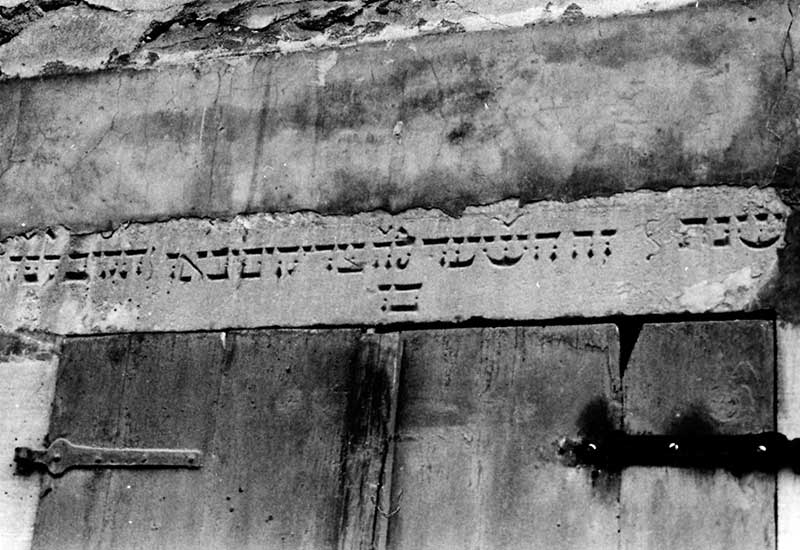
The building site for a new synagogue was available from about 1820. But the financing of such a new building required a huge effort on the part of the Jewish community. At the beginning of 1836 the building was approved by the Israelite Religious Administration of the Kingdom of Württemberg. On July 29th the foundation stone was laid.
The first estimate for building costs amounted to 8,590 gulden. The community then managed to negotiate an offer of 7,590 gulden. While the building was still in progress, it became clear that this financial plan was totally unrealistic. The costs continued to soar and finally amounted to 12,300 gulden.
This meant that the community had to take out a loan of over 5,800 gulden from various creditors. All community members took responsibility for a promissory note for 3,000 gulden as surety on June 17th, 1836.
The King of Württemberg also contributed 300 gulden.
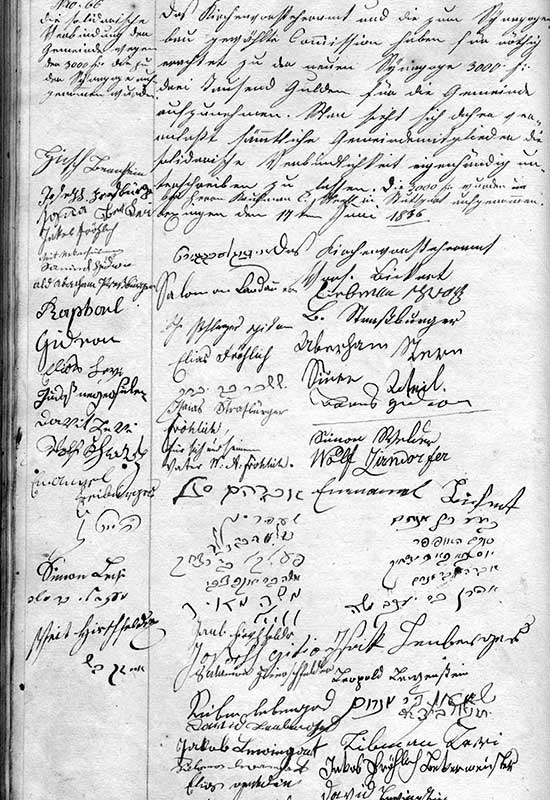
On August 18th 1837, the synagogue was inaugurated. On this day the sermon was preached by Dr. Moses Wassermann, the young rabbi in Mühringen who was in charge of the Black Forest District Rabbinate as of January 1835.
The most beautiful synagogue in the rabbinate district
In 1875 Rabbi Dr. Michael Silberstein described the entire rabbinate district of Mühringen. He wrote of the Rexingen synagogue in the highest terms of praise:
“The synagogue in Rexingen is unquestionably the most beautiful in the rabbinate, with two flights of stone steps leading up to the synagogue which is built on raised terraced ground. In front of the synagogue there is a colonnade with similar steps leading up to it. There are three side galleries for women. The pulpit is placed in front of the Ark of the Covenant which is on the east side opposite the entrance. Steps lead up to the pulpit and to the Ark of the Covenant. Below the pulpit is a marbled stone which the cantor also uses as lectern.
For men attending the synagogue there are subsellia on the left and on the right. These are separated by wide – all too wide – spaces.
Despite these wide spaces the synagogue easily holds 500-600 people. On the walls, especially on the eastern wall, one can see panels bearing the names of those held in remembrance because of their donations. In 1862, the ceiling of the synagogue was painted tastefully and the woodwork was also given a fresh coating.”
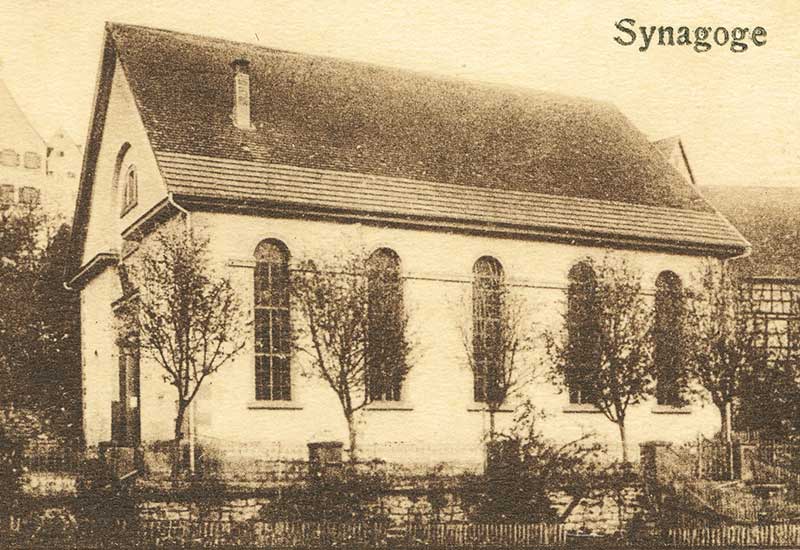
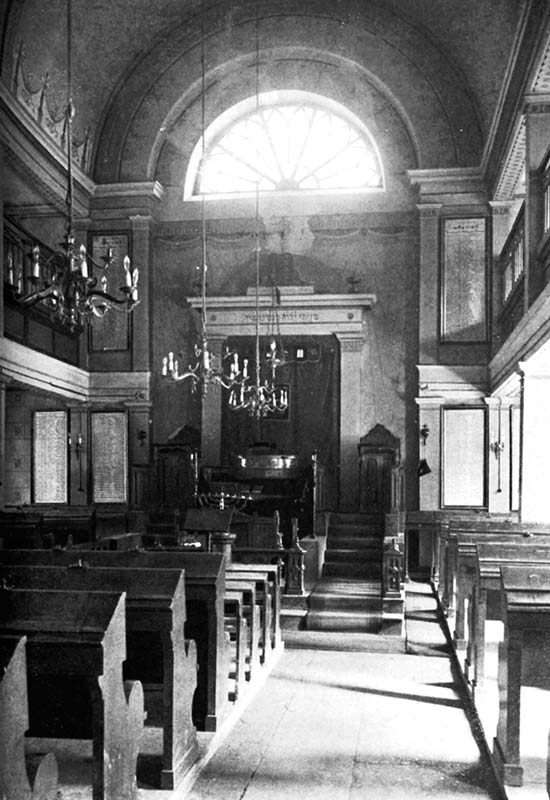
In the name of God to Eretz Yisrael
On February 6th, 1938, a solemn farewell service was held in the synagogue for the first group of Rexingen Jews to emigrate to Palestine, then an English mandate. Many prominent helpers of the emigrants were present, including Dr. Otto Hirsch from the National Representative Agency of German Jews in Berlin.
The chairman of the Jewish community, Viktor Neckarsulmer, stressed in his speech that the new settlement in Palestine – at that time called Malchutia – would always remain linked to Rexingen. He thanked all those who had supported this group of emigrants, especially Dr. Manfred Scheuer, a lawyer from Heilbronn later to become mayor of Shavei Zion.
The retired district rabbi, Dr.Abraham Schweizer from Horb, concluded his speech with these words:
“May God’s angels accompany you on your way! Never forget the homeland in which you leave behind parents and relations. Please them with regular reports and remember this holy place where we so often prayed together!”
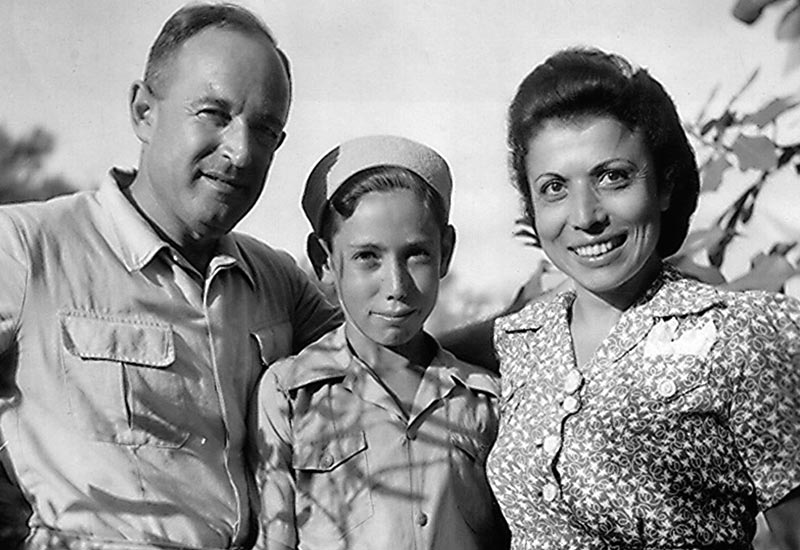
The defilement of the synagogue in November 1938
From a report by Viktor Neckarsulmer who emigrated to Shavei Zion in 1939:
“During the night between November 9th and 10th I was awoken by shouts of “the synagogue is on fire!” I rushed to the synagogue as quickly as I could and was shocked by what I saw. The synagogue was burning in different places. SA-people were tearing out lamps and memorial plaques for the dead from walls and ceiling. They were smashing the lectern, benches and Torah scroll with hatchets and axes. … In the same night the windows of all those houses still in Jewish possession were broken. … The synagogue was still standing but its interior was completely burnt out. Whatever was left - the Torah scroll, the prayer books, the prayer shawls, etc. - was heaped in a corner of the yard and set on fire again. … On my way home I was arrested and brought to the gaol in Rexingen. Others came with me. … Twenty- four hours later we were taken to the gaol in Horb. Two days later we were joined by other Jews from the area and transported as a group to Dachau.
Roughly two weeks after our release from Dachau the policeman on duty asked me to come to his apartment that evening. He told me the following: “ I took a Torah scroll out of the ashes and it’s in fairly good condition. I know that you are part of the second group soon to leave for Shavei Zion. If you’d like to take this Torah scroll with you, you can have it any time.”
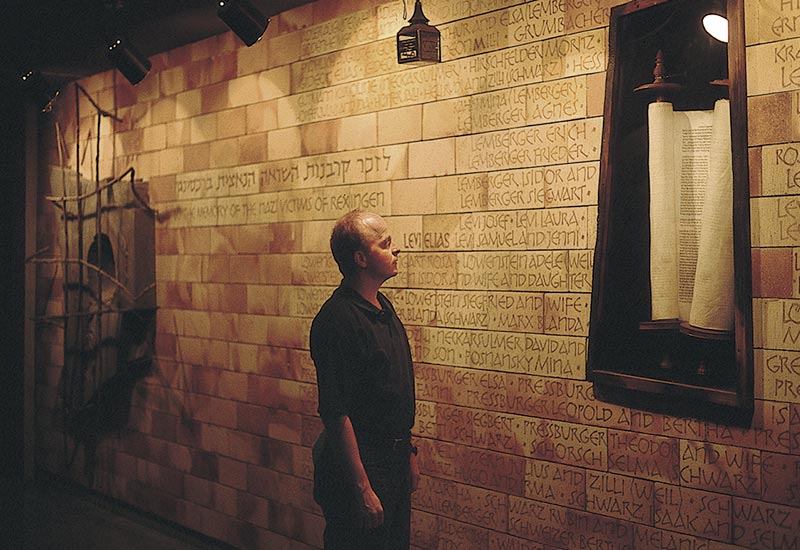
The synagogue as storeroom
After the defilement of the synagogue, it could no longer be used for religious services. The Jewish community gathered in the old synagogue and other buildings. Jakob Fröhlich, the grandson of Max and Augusta Fröhlich from Freudenstädter Straße, reported that he celebrated his bar mitzvah in 1939 in the Jewish restaurant Ratsstube before fleeing as a child to the family of his uncle Julius Fröhlich in Shavei Zion.
In 1939, the Nazis struck the synagogue off the list of protected heritage buildings on which it had been placed in 1927. In that same year the Jewish community for whom the situation was becoming more and more threatening sold the synagogue to the civic community for 7,000 reichsmark.
The NSDAP suggested that the synagogue should be converted into a community centre or gymnasium.
In 1943, the civic community let the synagogue out to the Mauser Weapons Factory in Oberndorf as a storeroom. The synagogue in Mühringen was also let out to the Mauser Factory for the storage of rifle butts. It had been confiscated by the Tax Office in Horb in1943 after the deportation of the last Jews.
The defiled synagogue becomes a Protestant church

After the war the number of Protestant inhabitants in Rexingen increased considerably. The community of over 350 members needed a church. After a long dispute with the civic community of Rexingen who favoured the use of the synagogue as community hall or gymnasium, the synagogue was finally rented and altered by the Protestants. The support of the Israelite Cultural Association of Württemberg played an important role in this decision.
Three significant changes were made to the building. A suspended ceiling was put in on a level with the women’s gallery. The upper room was then used for religious services, while the new lower rooms served as community rooms. A small bell tower was added to the roof, and the window shaped like a half rosette on the east side was replaced by a high, narrow, latticed window.
In 1972 the former synagogue was once again placed under protection as a historic building.
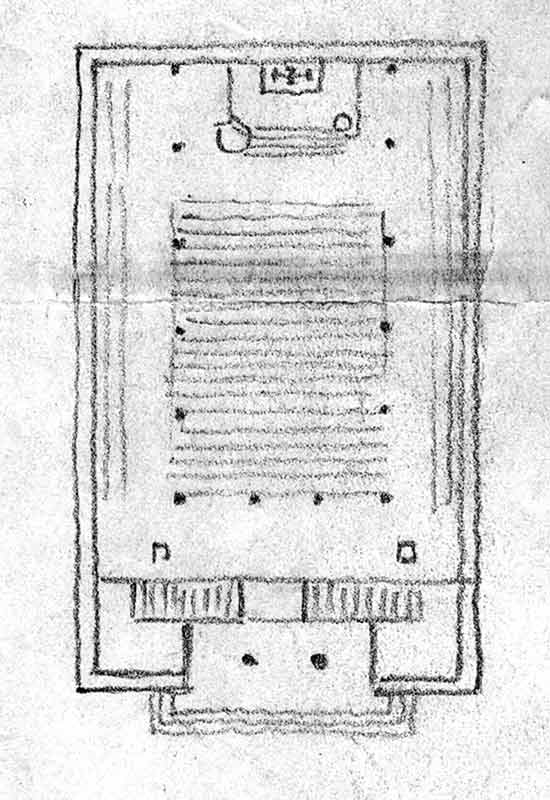
 Deutsch
Deutsch
 English
English
